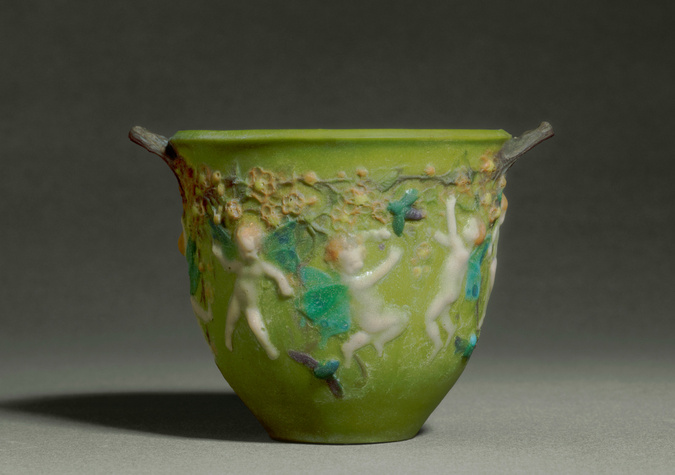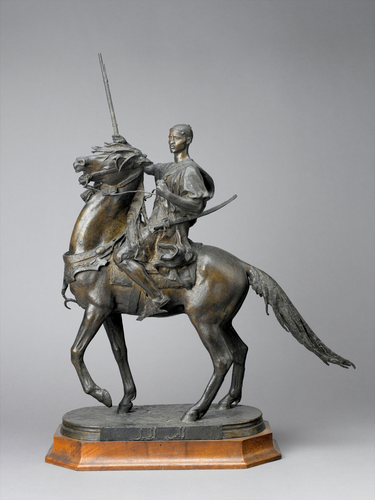Coupe
In spring 1912, the glassmaker François Décorchemont exhibited for the first time at the Salon des Artistes Décorateurs, then at the Salon des Artistes Français, a set of pieces – including this cup with its rose décor – which marked a turning point in his career. They had thick, translucent walls, both powerful and luminous, which contrasted with the extremely fine, opaque glass items he had been producing since the beginning of his career in 1903.
After 1909, while continuing to produce fine glass paste pieces, François Décorchemont began to experiment with a new casting technique. Helped by his father Louis-Emile Décorchemont (1851-1920), a statue maker, who worked with Jean-Léon Gérôme and taught sculpture at the Ecole Nationale des Arts Décoratifs, Paris, he decided to adapt the lost-wax casting process to glass. At the same time, he experimented with a new recipe for vitrified glass that was both transparent and luminous.
Similar in feeling to the work of Albert Dammouse, Décorchemont's creations nonetheless differ by his refusal to mould his pieces on nature and by the desire to achieve sculptural effects heightening the forms and constructive lines of his décors. This new idea of ornamentation and the search for a thick translucent material, for constructive as well as decorative purposes, brought him close to the contemporary research of René Lalique, whose technical breakthroughs in the 1910s were part of the same desire for a new aesthetics.





